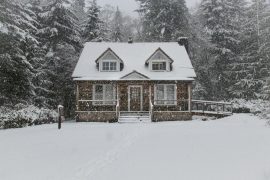Sit down, lay back, forget everything that is bugging you, take a deep breath and imagine yourself sitting in a home fully shone by the lustrous sun. Imagine a home that is capable of producing its own energy that could light every corner and a garden for you to stroll around and pluck your favourite fruit as an appetizer.
We’ve been acquainted with greenhouses and renewable energy sources. As humanity has been frequently supplemented with technology and housing commodities, the sustainability side has been overlooked. While researchers around the world are working on finding ways to maximize efficiency and limit resource usage, the implementation side looks far-fetched.
Although this concept has been modernized, the adamant minds of the modern world have to liquify at some point in the future to accept the fact that sustainability is a responsibility.
Now, let’s go back to off-grid housing and investigate some facts that are already available for us to dig into.
Self-sustaining housing isn’t a new concept. Our ancestors survived and thrived throughout the weary ages with this very concept. They utilised decomposable wastes, produced fire using biogas and produced enough food to meet their own requirements. Rainwater would be collected and recycled using the cisterns. In short, they built their own fortress and this safe haven of theirs sufficed all of their basic needs. We can still observe some remnants of this concept in remote villages, here in Nepal.
“Necessity is the mother of Invention”. As humanity has been trialled with many tests and challenges in the past, creative thinking and the ability to solve problems has uplifted us from all and any kind of DoomsDay.
Talks of living in the wilderness, without internet and a smartphone would give nightmares to any individual in this age of information and online social networking. But self-sustaining off-grid housing can be refurbished and designed in a way to meet our needs and is sustainable at the same time. Walls around the house can be built using solar panels. Vertical farming can help produce more on a considerably smaller land area. Houses can be designed in a way to collect rainwater and many possibilities can be thought of hereafter.
With an exception to commercial houses, self-sustaining residential homes can look just as exotic as your dream house if you try to think of one at this very moment. The cost of building these homes cannot be stipulated as of now. But, I’m sure we’ll come up with ways to minimize the cost and make it affordable for people of all economic classes. Is self-sustaining off-grid housing the future? Or will reliance on nature be completely withered?






